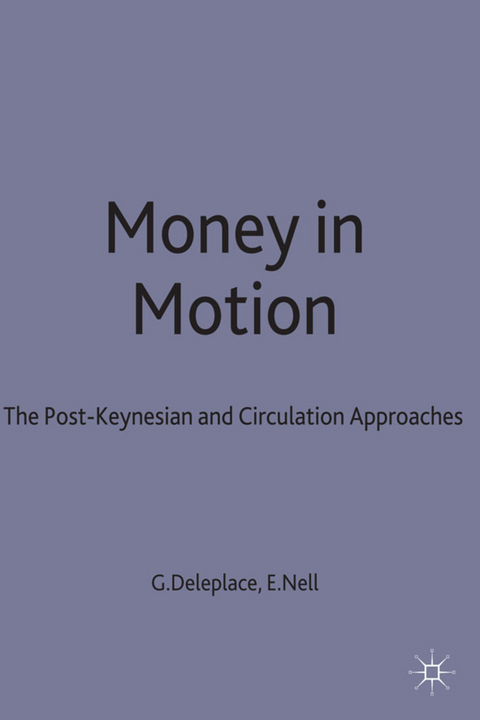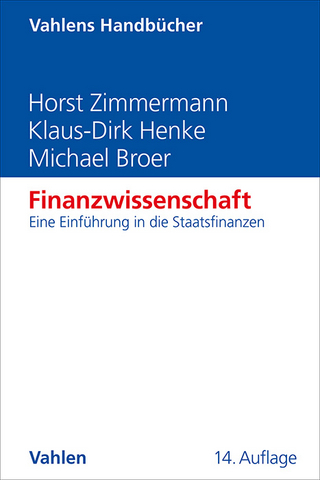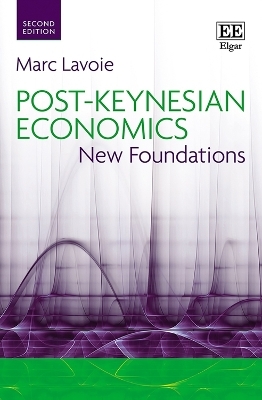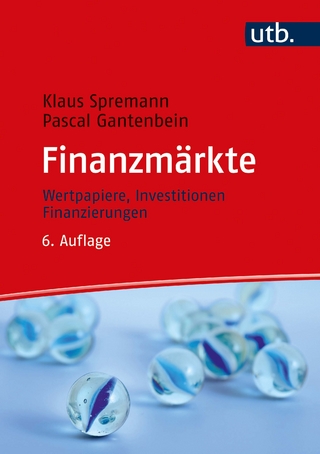
Money in Motion
Palgrave Macmillan (Verlag)
978-0-333-56695-4 (ISBN)
Acknowledgements - Notes on the Contributors - PART 1: EDITORS' INTRODUCTION: MONETARY CIRCULATION AND EFFECTIVE DEMAND - PART 2: BASIC THEORETICAL APPROACHES - Introduction - A: Post Keynesian Theory - What are the Essential Elements of Post Keynesian Monetary Theory?; P.Davidson - The Essential Characteristics of Post Keynesian Economics; H.P.Minsky - The Money Supply Process: a Historical Reinterpretation; B.J.Moore - B: Circulation Views - A New Paradigm for the Determination of Money Prices; B.Schmitt - Money as Purchasing Power and Money as a Stock of Wealth in Keynesian Economic Thought; A.Graziani - Beyond Scarcity: A Reappraisal of the Theory of the Monetary Circuit; A.Parguez - Payments Systems and Dynamics in a Monetary Economy; J.Cartelier - PART 3: THE TWO TRADITIONS: COMMENTARY AND HISTORY - Introduction - A: Searching for the Roots of Circulation Theory - The Circuit of Money in a Production Economy; E.J.Nell - Does Circulation need a Monetary Standard?; G.Deleplace - The Relevance to Modern Economics of the Banking School View; P.Mehrling - The National Economy Studied as a Whole: Aspects of Circular Flow Analysis in the German Language; B.Schmitt & S.Greppi - B: Confronting the Mainstream - The Ambiguity of the Notion of General Equilibrium with a Zero-Price for Money; C.Benetti - Basic Choices in Keynesian Models of Credit G.A.Dymski - C: Comparing Post Keynesian and Circulation Approaches - Post Keynesian Fundism and Monetary Circulation; M.Seccareccia - Investment Decisions in Circuit and Post Keynesian Approaches: a Comparison; R.Arena - PART 4: ENDOGENEOUS MONEY - Introduction - A: The Relevance of the Institutional Framework - Money in the Circular Flow; L.R.Wray - Monetary Circulation and Overdraft Economy; F.Renversez - B: Explanations of Endogeneity: Accommodation or Structure - Money Supply Endogeneity: What are the Questions and Why do they Matter?; R.Pollin - Beyond Endogeneous Money, Toward Endogeneous Finance; T.I.Palley - Monetary Policy in an Economy with Endogeneous Credit Money; M.Lavoie - PART 5: INNOVATIVE FINANCE Introduction - A: Finance, Risks and Crises - Systems Risks, Financial Innovations, and the Financial Safety Net; M.Aglietta - Financial Crises and the Business Cycle: How Different are the 80's?; M.Wolfson - B: Finance and the Business Cycle - Finance, Profit Expectations, and Investment in the Business Cycle: Theories and Empirical Evidence; W.Semmler & R.Franke - Finance Constraints, Accumulation, and Business Cycles; M.Jarsulic - PART 6: POLICY - Introduction - The Policy Implications of the Current Banking Crisis, or, Is Free Market Capitalism Compatible with Endogeneous Money?; J.A.Kregel - The Spheres of Industrial and Financial Circulation Revisited, and their Implications for Post Keynesian Economic Policy; S.Rousseas - Profit Squeeze, Rentier Squeeze, and Macroeconomic Policy under Fixed and Flexible Exchange Rates; G.Epstein - The European Plan for the Creation of a Single Currency; S.de Brunhoff - Afterword - Index
| Erscheint lt. Verlag | 27.3.1996 |
|---|---|
| Reihe/Serie | Jerome Levy Economics Institute |
| Zusatzinfo | XIII, 770 p. |
| Verlagsort | Basingstoke |
| Sprache | englisch |
| Maße | 155 x 235 mm |
| Themenwelt | Wirtschaft ► Volkswirtschaftslehre ► Finanzwissenschaft |
| Wirtschaft ► Volkswirtschaftslehre ► Makroökonomie | |
| ISBN-10 | 0-333-56695-5 / 0333566955 |
| ISBN-13 | 978-0-333-56695-4 / 9780333566954 |
| Zustand | Neuware |
| Haben Sie eine Frage zum Produkt? |
aus dem Bereich


